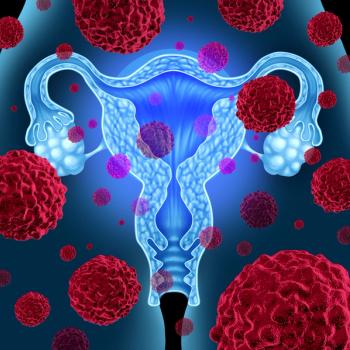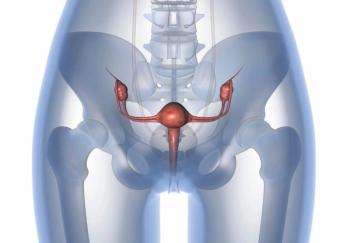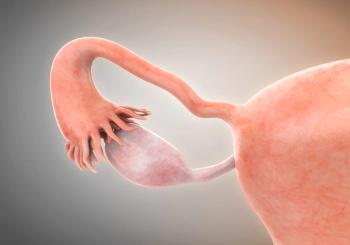
Oncology NEWS International
- Oncology NEWS International Vol 8 No 7
- Volume 8
- Issue 7
Watch for Signs of Depression in Ovarian Cancer Patients
Depression serious enough to affect daily functioning occurs in one of every five patients who have epithelial ovarian cancer, according to data presented at the 30th Annual Meeting of the Society of Gynecologic Oncologists. Diane Bodurka-Bevers, MD, and her colleagues at the University of Texas M.D. Anderson Cancer Center studied this problem in 275 patients with ovarian cancer.
SAN FRANCISCODepression serious enough to affect daily functioning occurs in one of every five patients who have epithelial ovarian cancer, according to data presented at the 30th Annual Meeting of the Society of Gynecologic Oncologists. Diane Bodurka-Bevers, MD, and her colleagues at the University of Texas M.D. Anderson Cancer Center studied this problem in 275 patients with ovarian cancer.
Dr. Bodurka-Bevers said in an interview that the prevalence of depressive symptoms in her subjects was much higher than is generally assumed for ovarian cancer patients. The estimates of prevalence of depressive symptoms range from 5% to more than 25% in cancer patients, but no one has previously looked at this in ovarian cancer patients, she said. This is the first study to show that depression and anxiety affect the daily functioning of patients who have ovarian cancer.
Dr. Bodurka-Bevers reported that as part of a validation of the Functional Assessment of Cancer Therapy-Ovary (FACT-O, the FACT-G ovarian subscale), a prospective study was conducted to assess quality of life (QOL), evaluate performance status, and screen for depression in patients with epithelial ovarian cancer. Of 360 consecutive patients identified with ovarian cancer, 275 agreed to participate in the study.
One Fifth Were Depressed
Five dimensions of cancer patient QOL were assessed, including physical, functional, social/family, and emotional well-being, as well as relationship with health care providers. Depression was measured with the Center for Epidemiological Studies-Depression scale (CES-D). Performance status was evaluated by the Zubrod score.
Of the 243 patients who completed the questionnaire, 57 (24%) had early-stage disease, 149 (61%) had advanced disease, and 37 (15%) were unstaged. Patients were being treated for recurrence (25%) or newly diagnosed disease (24%), or were being seen for post-therapy surveillance (51%).
Fifty patients (20%) met CES-D criteria for depression. Thirty-two of these (64%) were receiving treatment for ovarian cancer recurrence, 12 (24%) were being seen in follow-up, and 6 (12%) were newly diagnosed with ovarian cancer. The number of patients who were receiving treatment for depression is unknown.
Depression was correlated with decreased QOL as measured by the FACT-O and with poor performance status.
The therapeutic implications of our study include the need for further evaluation and possible pharmacologic treatment of depression in these patients, Dr. Bodurka-Bevers said. Patients under active treatment for newly diagnosed or recurrent ovarian cancer exhibit a substantially higher number of depressive symptoms than women undergoing post-therapy surveillance or women in the general population.
She added that women under active treatment for ovarian cancer have substantially more anxiety than women in the general population.
Depression and anxiety significantly impact the emotional and functional well-being of patients with epithelial cancer, Dr. Bodurka-Bevers concluded, and patients who report a higher number of depressive symptoms warrant clinical assessment and possible treatment.
She recommended that a workup for suspected depression in ovarian cancer patients should include completion of a screening questionnaire, and, for those whose screening indicates depressive symptomatology, referral to a specialist for further evaluation.
Articles in this issue
over 26 years ago
Nasal Angiogenesis Inhibitor May Stop Kaposi’s Sarcomaover 26 years ago
Surgeon’s Perspective on Neoadjuvant Chemo for Breast Cancerover 26 years ago
STAR Breast Cancer Prevention Trial Begins Enrollmentover 26 years ago
Studies Suggest New Approaches in Hereditary Ovarian Cancerover 26 years ago
Lycopene Beneficial in Prostate Cancerover 26 years ago
Komen Launches REMEMBERover 26 years ago
Advice and Support for Daughters of Breast Cancer Patientsover 26 years ago
Fetus May Be Harmed by Second-Hand Smokeover 26 years ago
Genes Linked to Smoking Affinity, Smoking-Induced Lung Cancerover 26 years ago
Ultraviolet Light Slated for Review as CarcinogenNewsletter
Stay up to date on recent advances in the multidisciplinary approach to cancer.

















































































